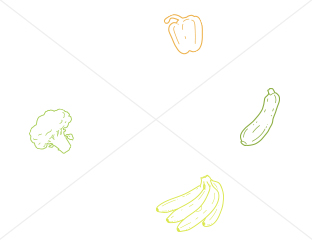
- 2kg whole chicken with giblets
- A large handful of flat leaf parsley
- 2 garlic cloves
- 90g butter, room temperature
- 1 lemon
- 320g shallots
- Sea salt
- 2-3 tbsp olive oil
- Freshly ground pepper
- 1.
Remove the chicken from the fridge and unwrap it. Take out the giblets (see our tip on how to turn the giblets into a stock for gravy). Leave the chicken to come to room temperature for around 30 mins. Heat your oven to 200°C/Fan 180°C/Gas 6.
- 2.
Finely chop the parsley leaves (keep the stalks for your giblet gravy) and place them in a mixing bowl. Peel and finely chop or grate the garlic. Add to the bowl. Add the softened butter and finely grate in the zest from the lemon. Add salt and pepper. Beat together till combined and vivid green.
- 3.
Using your fingers, or the end of a wooden spoon, lift the skin from the chicken breast, taking care not to tear the skin. Place the parsley butter under the skin and gently massage it in. Rub the outside of the chicken with 1 tbsp olive oil and season with a pinch of salt and pepper. Halve the lemon and pop it in the body cavity. If you have kitchen string, you can truss the chicken so it looks neater.
- 4.
Scatter the unpeeled shallots into a roasting tin and pop the chicken on top, if you can. Try to use them as a trivet. If it's too wobbly, just scatter them around the chicken in the tin. Slide the chicken into the hot oven and roast for 45 mins.
- 5.
Fill and boil your kettle. After 45 mins, remove the chicken from the oven. Use a spoon to baste the chicken with any juices from the tin. Pour 250ml hot water from the kettle into the tin around the edge of the chicken (but not over it). Slide the chicken back into the oven for a further 45 mins.
- 6.
The chicken should be cooked through. Check by inserting a knife or skewer into the leg. The juices should run clear. If they're pink, slide back into the oven for 10 mins or till the juices run clear.
- 7.
Lift the chicken and shallots out of the tin and pop on a board. Cover the chicken with a loose tent of foil and leave to rest for 30 mins.
- 8.
Squash the shallots out of their skins. Reheat the buttery juices from the roasting tin. Serve the roast chicken with the juices spooned over, and the roast shallots on the side.
- Tip
Get Ahead:
You can make the parsley butter up to 3 days before you want to cook the chicken. Make the butter, then pop it in a bowl and cover with baking paper. Store in the fridge. The butter can also be frozen for up to 3 months. - Tip
It's All Gravy:
You can use your chicken giblets to make a stock that's brilliant turned into gravy. Pop the giblets into a pan and add 1 onion, sliced in half, a chopped carrot and celery stick, and the stalks from the parsley or a bay leaf and some thyme sprigs. Pour in 1 ltr cold water, cover with a lid and bring to the boil. Turn the heat down and simmer for 2 hrs, then strain. To make gravy, melt 2 tbsp butter in a pan and stir in 2 tbsp plain flour. Cook and stir for 2 mins, then slowly trickle in the giblet stock, whisking it to combine it with the roux. You can add the roasted shallots for the tin (the juices are a bit too buttery). Simmer for 5-10 mins till thickened. Serve with your roast chicken. - Tip
Love Your Leftovers:
The roast chicken will keep for up to 3 days in the fridge. The best way to keep it is to strip the meat from the chicken carcass and transfer that to a tub, seal and store in the fridge. The chicken can be used in sandwiches, salads or soups. The chicken carcass can be turned into stock, just like the giblets.
